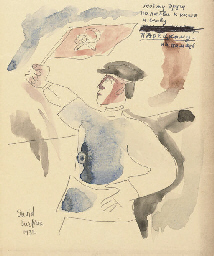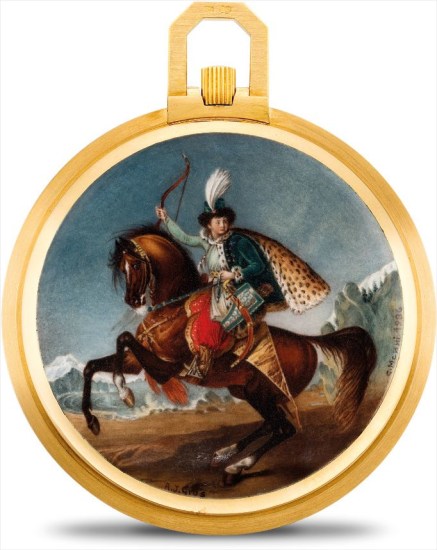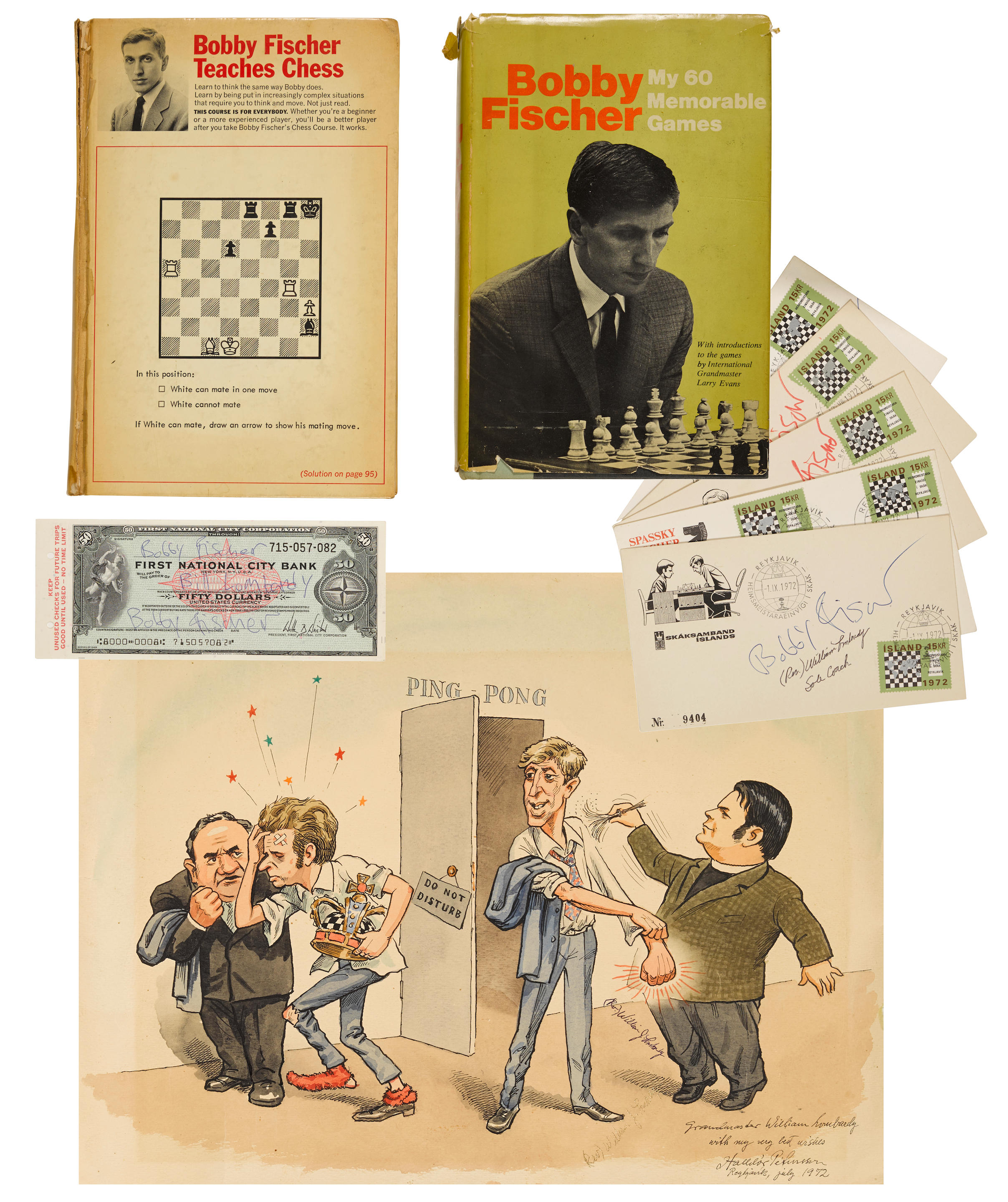5719 - Framed original oil on Canvas by the Late Boris Smirnoff (1895-1976) Mother and Child. Previous gallery price was £4800. Born in 1895, Boris Smirnoff was largely inspired by the 1900s and 1910s. The dynamic development of pictorial art defined the first decades of the twentieth century. It was an era of experimentation and post-Impressionism, with artists first delving into Expressionism and Abstraction. Many different collectives and communities of artists across the world evolved many ways of expressing these crucial innovations. The Fauves are widely considered to be the first major Post-Impressionist group, working in the at the start of the twentieth century. Including artists such as Henry Matisse within their ranks, the Fauves believed that vivid, other worldly colours and vibrant brushstrokes were a key component of their work. During this same time period a young Pablo Picasso, still in his youth, created his famous Blue and Rose periods in Paris, and by the end of the 1920s he had established the initial ideas of portraying fractured views of reality alongside his contemporary Georges Braque. This movement became known as Analytical Cubism. The De Stijl group in the Netherlands, under the leadership of Piet Mondrian, started to practice important theories about Abstraction. Alongside this, Kasimir Malevich and his contemporaries developed Constructivism and Suprematism in the Soviet Union. These radical styles of art were demanding and politicised, and looked to serve a new world order. The first twenty years of the 20th century can be considered to be the most prolific, and are noted as the era in art history when modern and modernist ideas first began to take hold culturally. Mechanisation in production and ideas of order and rationality ensured the discipline of architecture to develop at an extraordinary rate, and was defined by in the work of Le Corbusier and Gerrit Rietveld. Bauhaus was prevalent at this time and defined the idea of a common discipline across all types of creative art. Most, if not all, of the ideologies of important art movements that we associate with modern and contemporary art can be traced back to the diverse range of work made during this era. The psychological applications of art began to be further explored and developed following the terrors of the WWI. Dadaism, a nonsensical and absurdist movement inspired directly by the war, sprung up in Paris, Berlin, Zurich and Hannover, and launched the careers of artists such as Marcel Duchamp, Francis Picabia, Hannah H√∂ch and Kurt Schwitters. The essential philosophies behind Dadaism would go on to find ground in Surrealism, which was the first art movement to fully integrate psychology and ideas about the subconscious, and took great inspiration from the work of Sigmund Freud and Carl Jung. At the same time, Expressive painting was being further established and explored in various places around the world. the Nabis in France were the first to truly explore this movement at the turn of the century, and German groups such as Die Brucke and Der Blaue Reiter soon followed suit, developing the careers of legendary artists such as Kirchner, Franz Marc, and Wassily Kandinsky. H: 96cm W: 75cm D: 8cm
5719 - Framed original oil on Canvas by the Late Boris Smirnoff (1895-1976) Mother and Child. Previous gallery price was £4800. Born in 1895, Boris Smirnoff was largely inspired by the 1900s and 1910s. The dynamic development of pictorial art defined the first decades of the twentieth century. It was an era of experimentation and post-Impressionism, with artists first delving into Expressionism and Abstraction. Many different collectives and communities of artists across the world evolved many ways of expressing these crucial innovations. The Fauves are widely considered to be the first major Post-Impressionist group, working in the at the start of the twentieth century. Including artists such as Henry Matisse within their ranks, the Fauves believed that vivid, other worldly colours and vibrant brushstrokes were a key component of their work. During this same time period a young Pablo Picasso, still in his youth, created his famous Blue and Rose periods in Paris, and by the end of the 1920s he had established the initial ideas of portraying fractured views of reality alongside his contemporary Georges Braque. This movement became known as Analytical Cubism. The De Stijl group in the Netherlands, under the leadership of Piet Mondrian, started to practice important theories about Abstraction. Alongside this, Kasimir Malevich and his contemporaries developed Constructivism and Suprematism in the Soviet Union. These radical styles of art were demanding and politicised, and looked to serve a new world order. The first twenty years of the 20th century can be considered to be the most prolific, and are noted as the era in art history when modern and modernist ideas first began to take hold culturally. Mechanisation in production and ideas of order and rationality ensured the discipline of architecture to develop at an extraordinary rate, and was defined by in the work of Le Corbusier and Gerrit Rietveld. Bauhaus was prevalent at this time and defined the idea of a common discipline across all types of creative art. Most, if not all, of the ideologies of important art movements that we associate with modern and contemporary art can be traced back to the diverse range of work made during this era. The psychological applications of art began to be further explored and developed following the terrors of the WWI. Dadaism, a nonsensical and absurdist movement inspired directly by the war, sprung up in Paris, Berlin, Zurich and Hannover, and launched the careers of artists such as Marcel Duchamp, Francis Picabia, Hannah H√∂ch and Kurt Schwitters. The essential philosophies behind Dadaism would go on to find ground in Surrealism, which was the first art movement to fully integrate psychology and ideas about the subconscious, and took great inspiration from the work of Sigmund Freud and Carl Jung. At the same time, Expressive painting was being further established and explored in various places around the world. the Nabis in France were the first to truly explore this movement at the turn of the century, and German groups such as Die Brucke and Der Blaue Reiter soon followed suit, developing the careers of legendary artists such as Kirchner, Franz Marc, and Wassily Kandinsky. H: 96cm W: 75cm D: 8cm















Try LotSearch and its premium features for 7 days - without any costs!
Be notified automatically about new items in upcoming auctions.
Create an alert